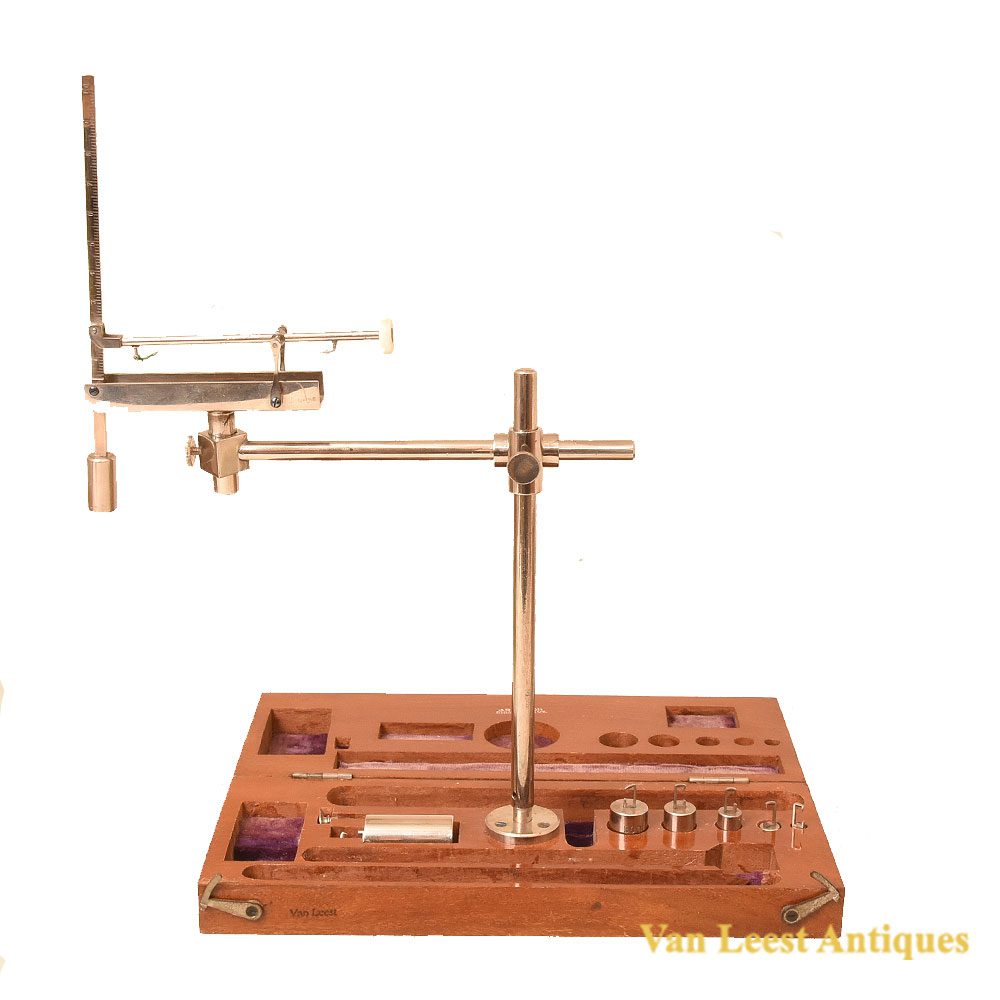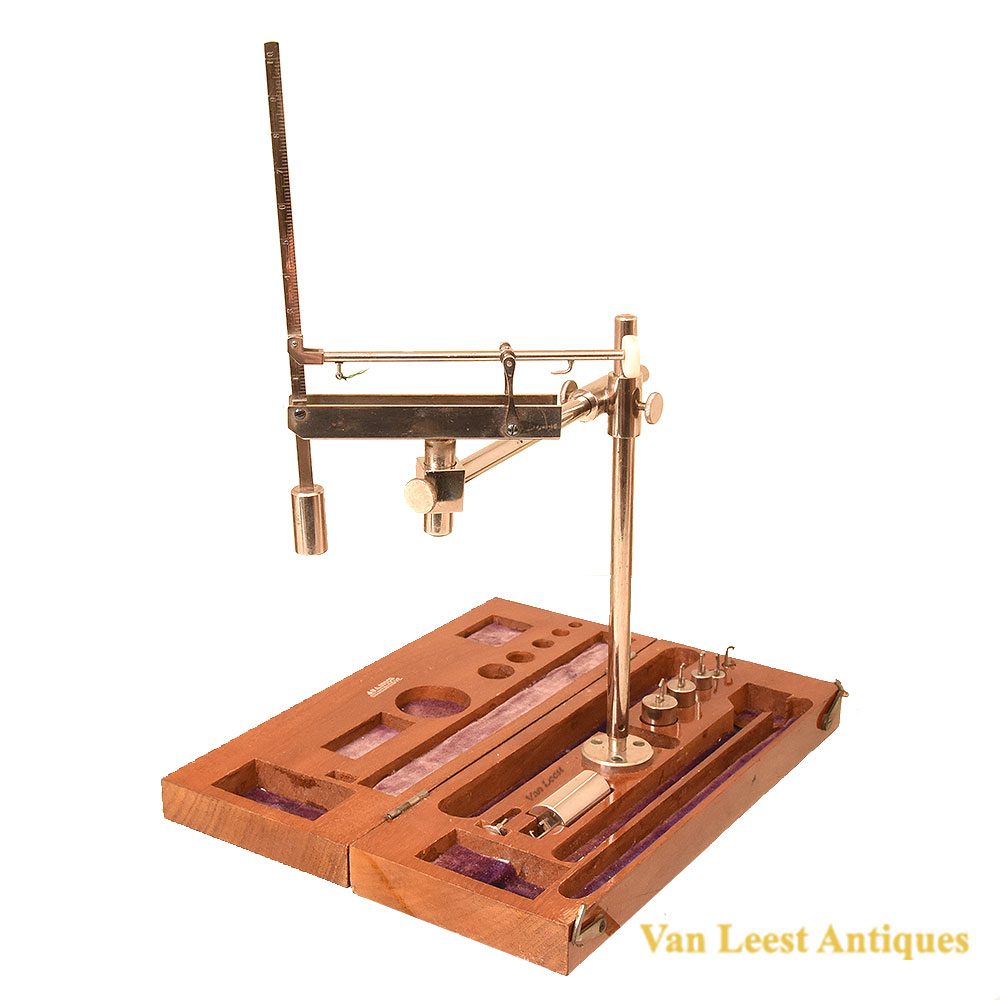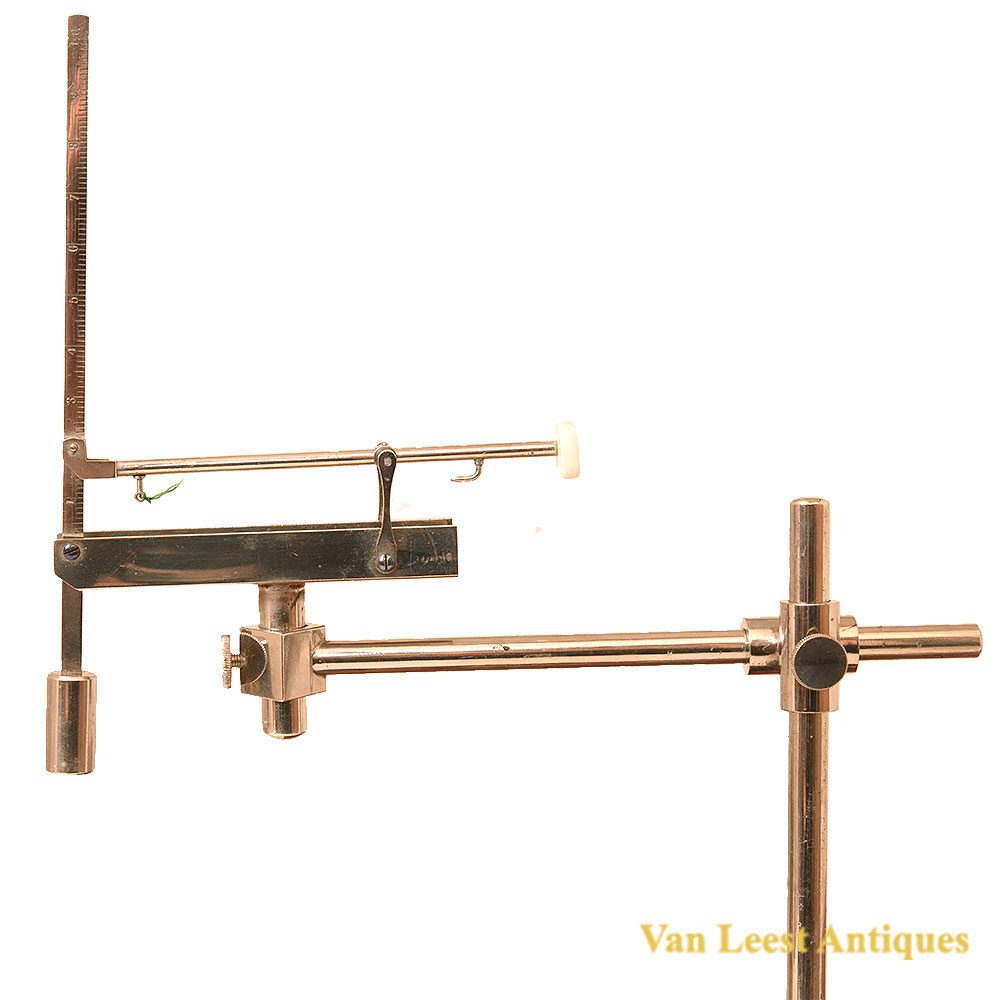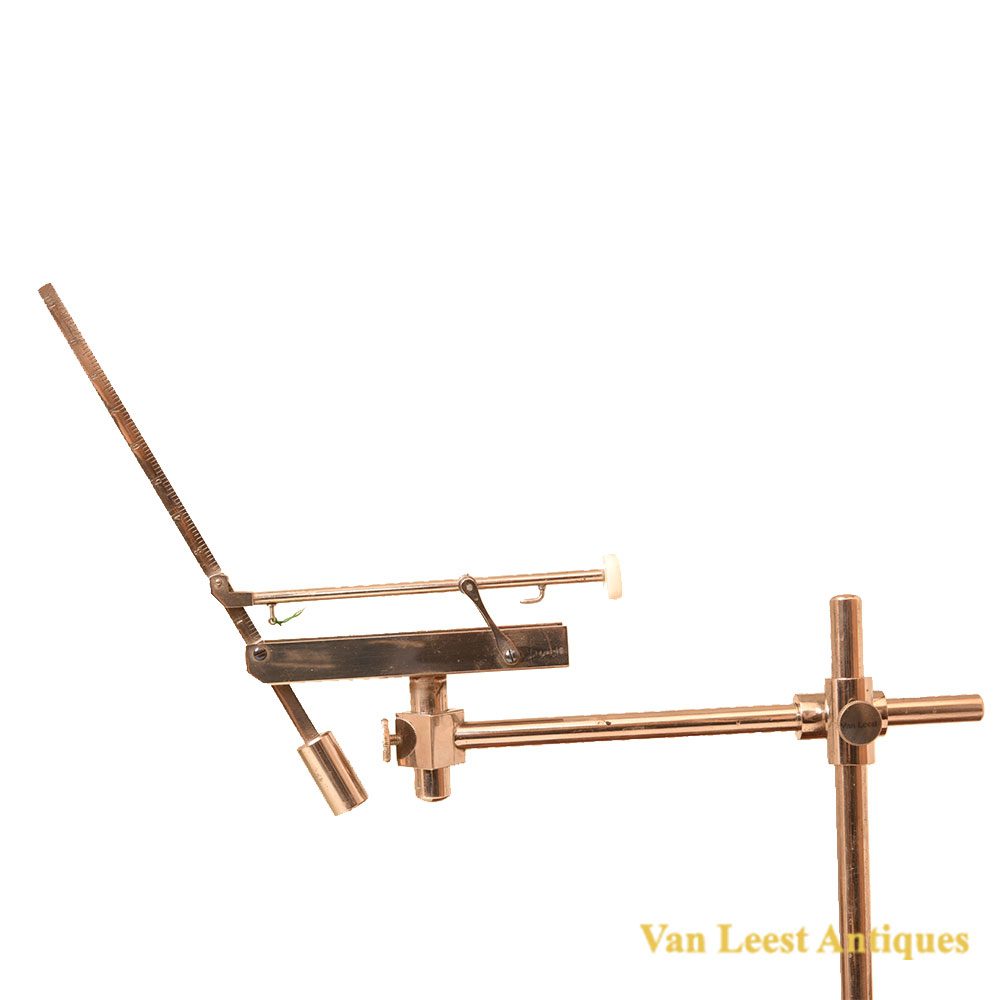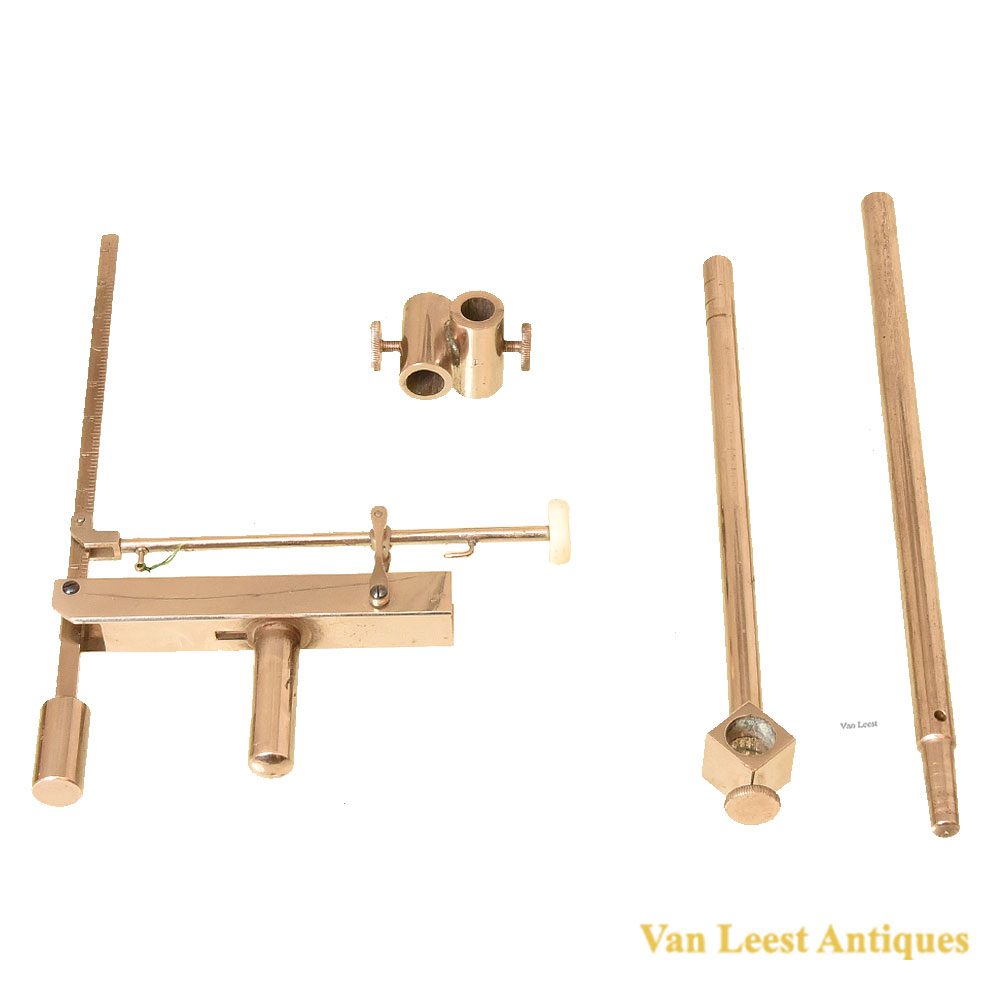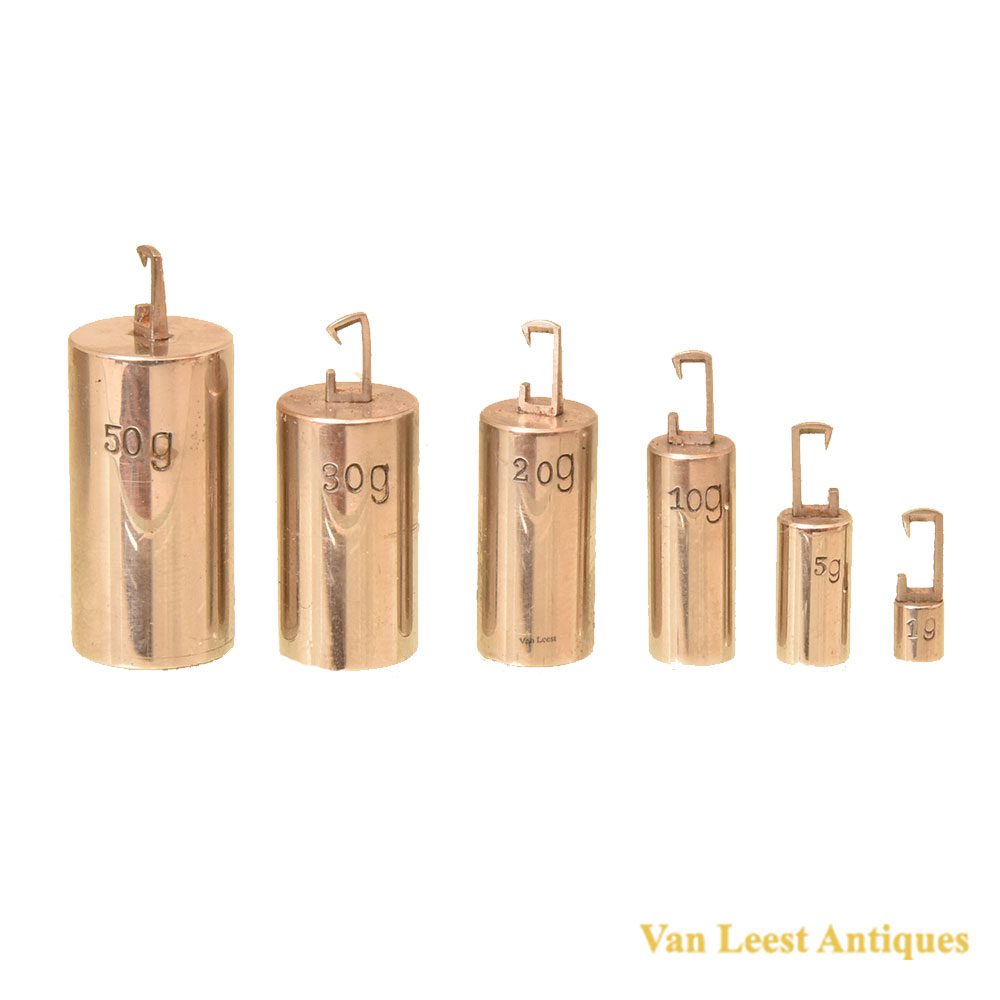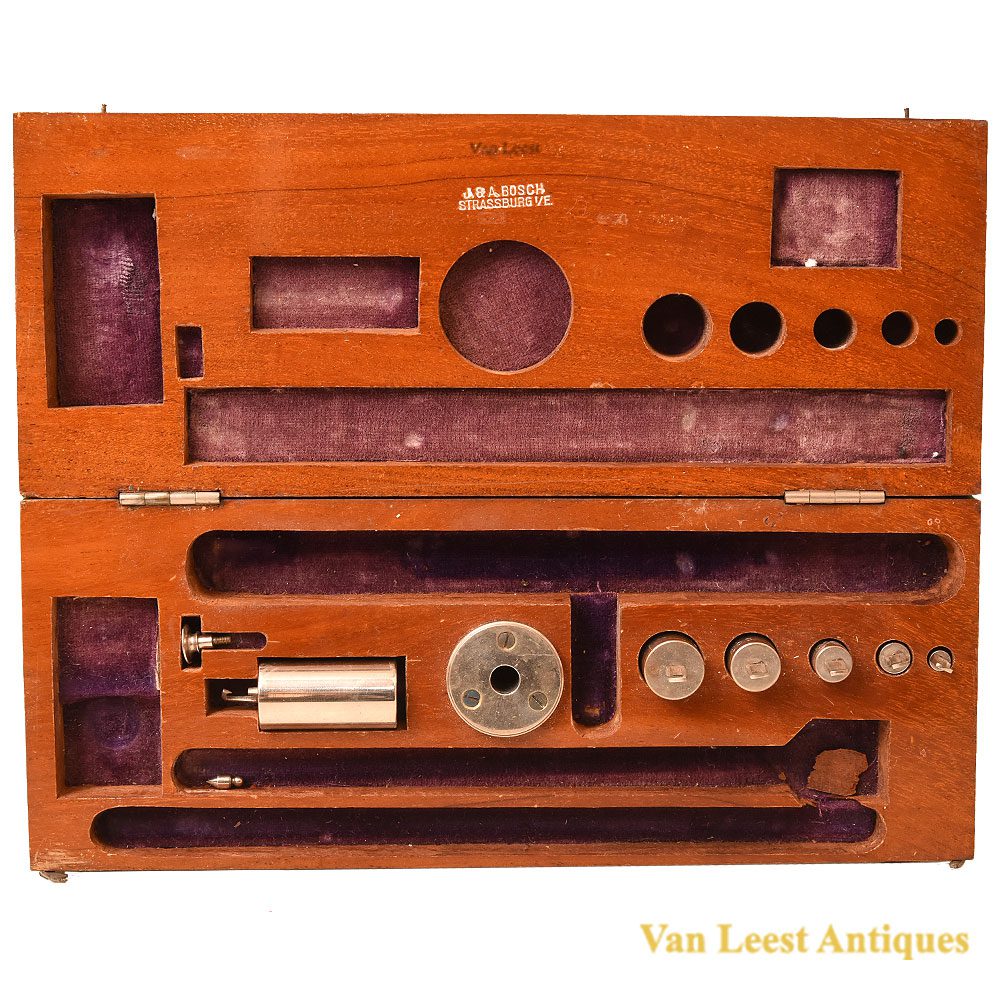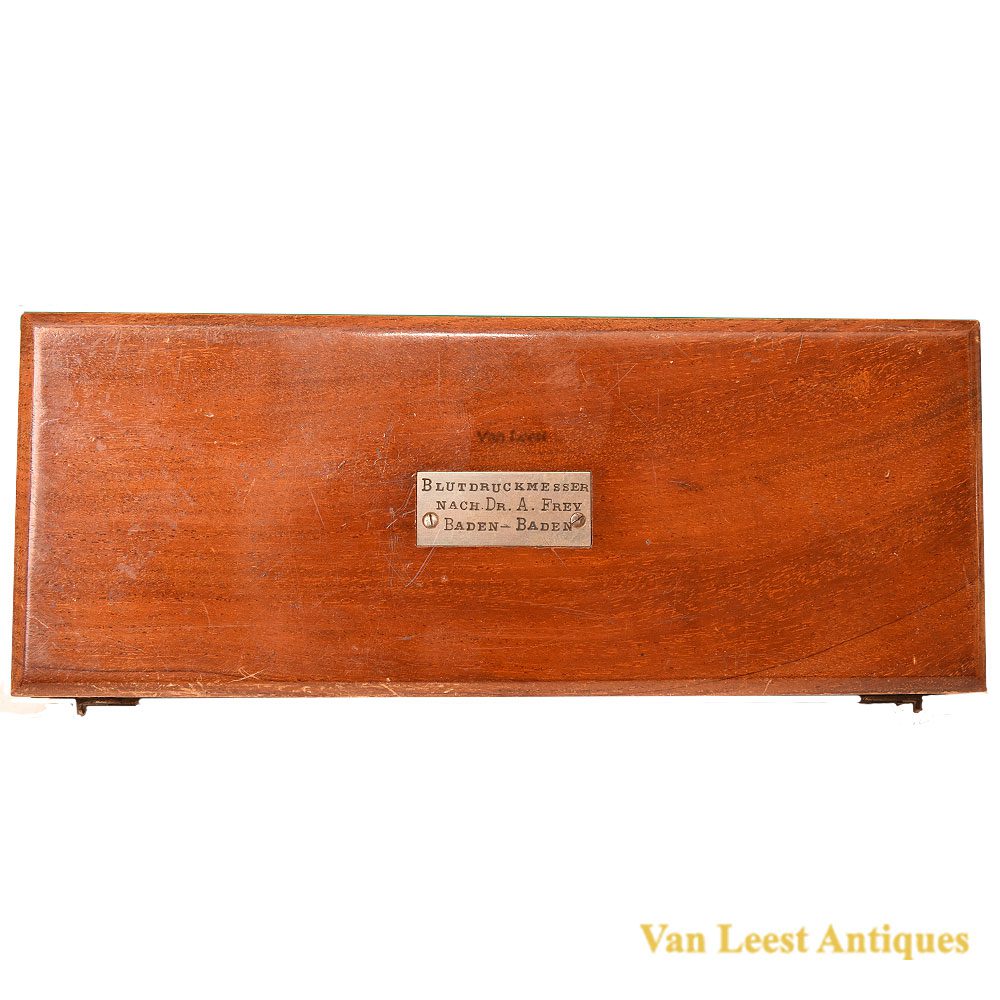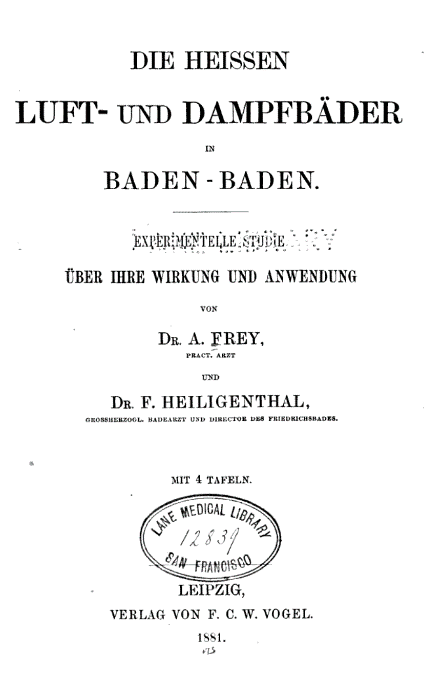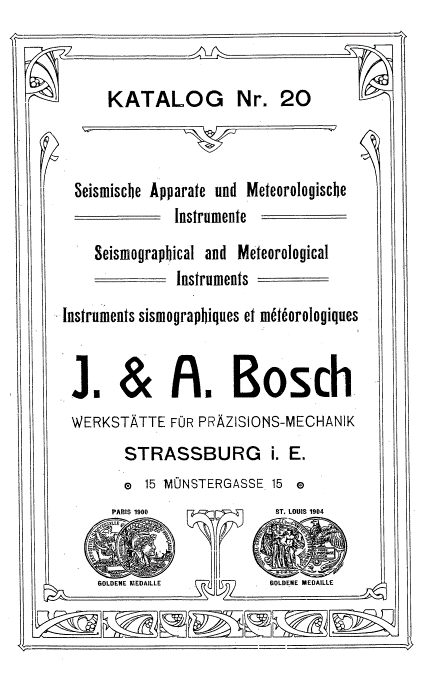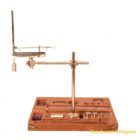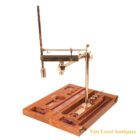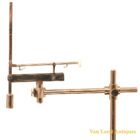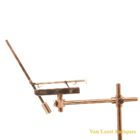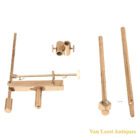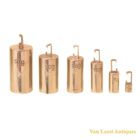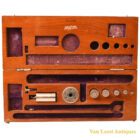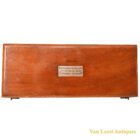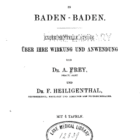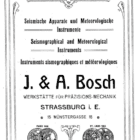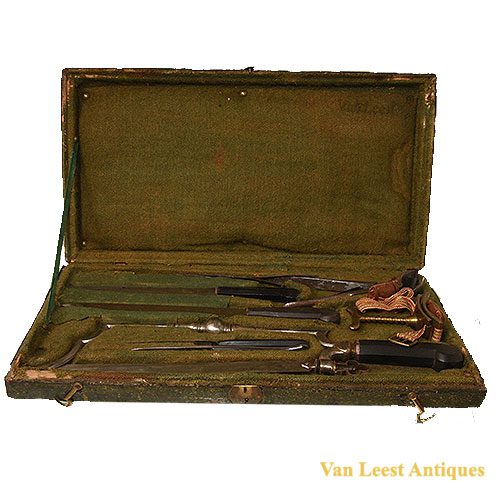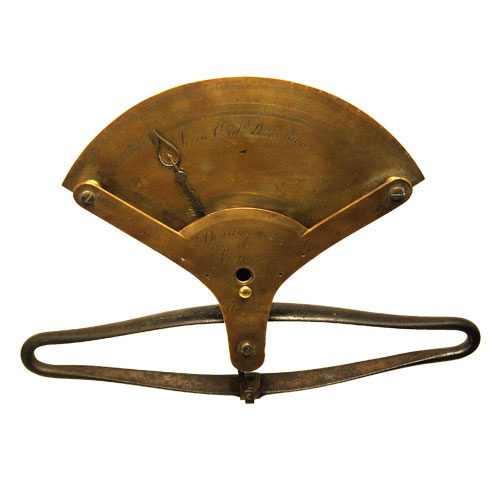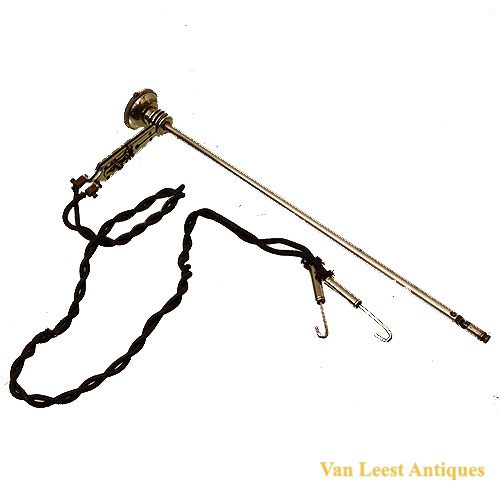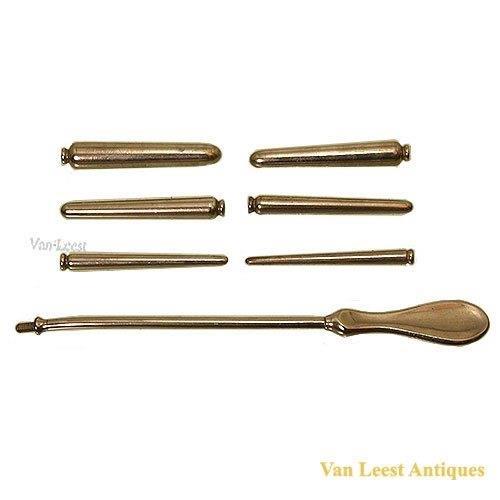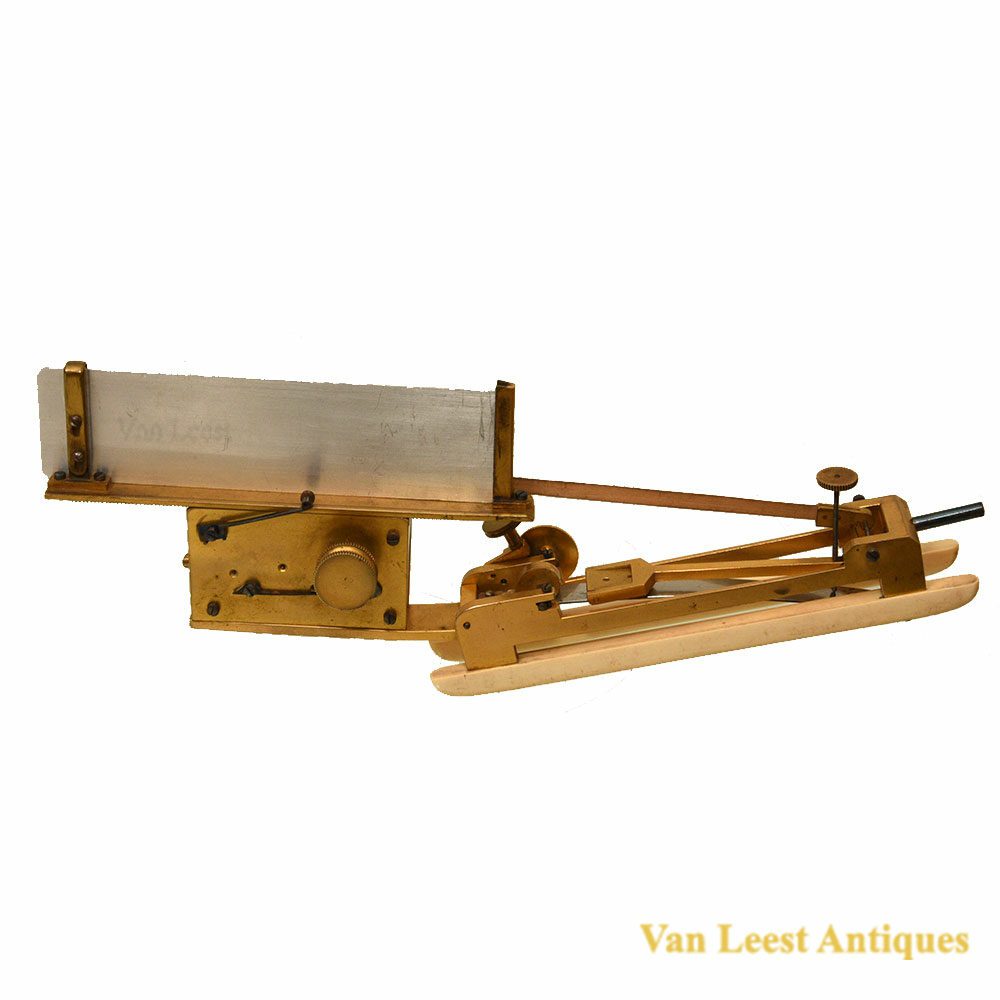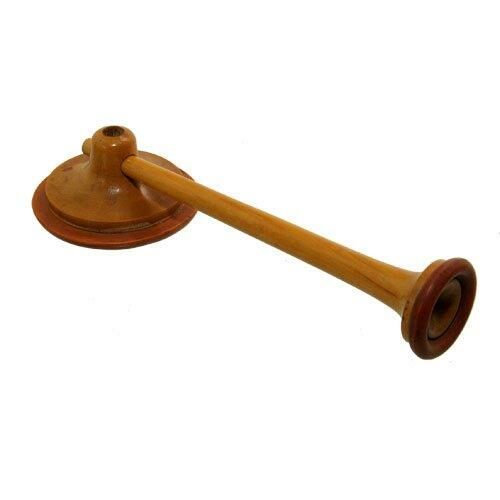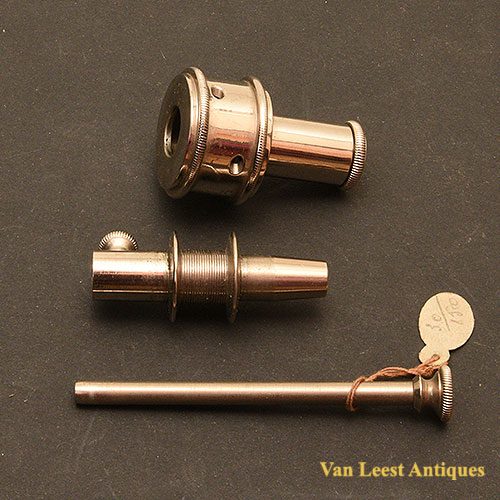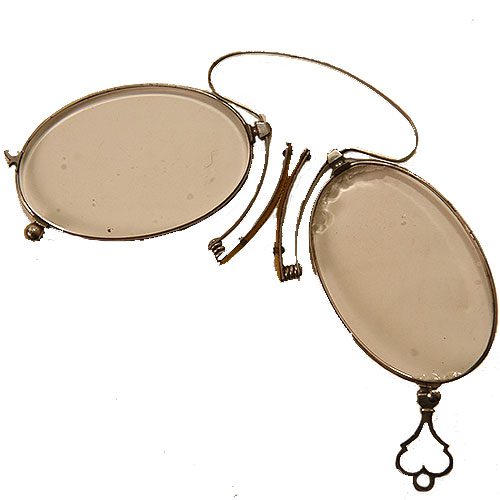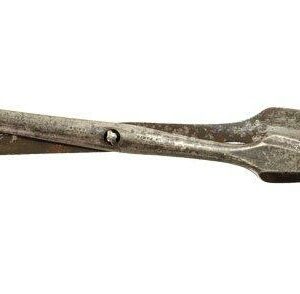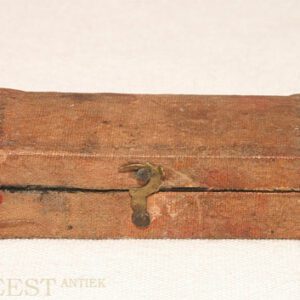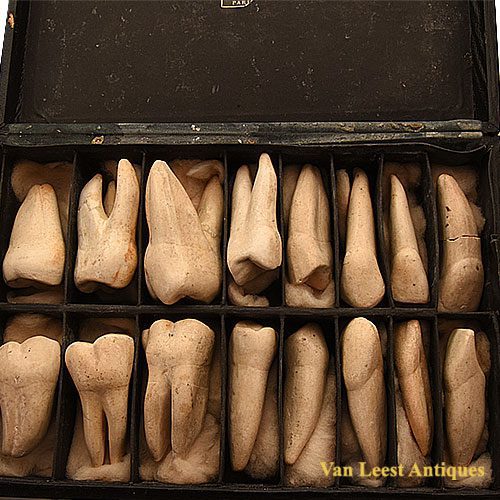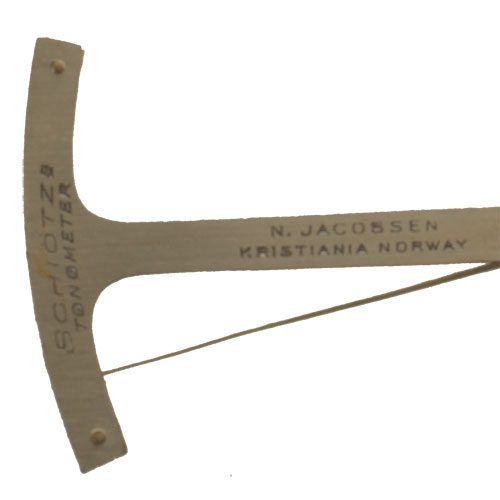A. Frey blood pressure monitor J. & A. Bosch
Sold
A blood pressure monitor inscribed with Blutdruckmesser nach Dr. A Frey Baden-Baden and on the inner side of the box J.&A. Bosch Strasburg. The Blood pressure monitor arises from a socket in in which a the steel stem can be secured. To this stem a connecting piece with two sliding holes is attached it over the stem. The connecting pieces can be secured by a rotary knob. To the horizontal direction the second stem is attached and secured. At its end a small cube is made to which the blood pressure monitor is attached, which consist three main elements. The box comes with six weights of 50, 30, 20, 10, 5 and 1 gram a pointer and a spare rotary knob.
In the Munich Midweek newspaper of 8 March a report is given of the 20th Balneological Congress, which took place on 4 March 1899. The annual balneological meeting was held in order to bring together spa doctors where they could discuss the attempt to nationalize the spas, the effectiveness of treatments with cold water and pulmonary treatments and the presentation of new inventions.
On this congress Mr. Frey from Baden-Baden demonstrated a hot air shower and a blood pressure monitor. The slightest birth defects and heart defects can be detected by lettering. Some speakers in the debate are sceptical about its usefulness. However, Geh Nath Liebreich gives full credit to the blood pressure monitor. The hot air shower is operated by an electric motor and offers the advantage of allowing any part of the body to look as desired under the effect of the hot air. Anton Frey published a book about the working of hot air and dampf showers in 1881.
Joseph and Albert Bosch began crafting mechanical instruments in their Strasbourg workshop in Alsace in 1888. At that time, Alsace was under German control following the Franco-Prussian War. After World War I, Alsace was returned to France, Forcing the Bosch’s’ to leave but the company would evolve to the brand Boso, specialising in blood pressure monitoring. While initially specializing in meteorological instruments, they gained recognition for their production of seismographs by winning gold medals at the world exhibition in Paris in 1900 and St. Louis in 1904. Another important development was their blood pressure monitor which could be mass-produced.
Box dimensions: 8,5 x 21,5 x 4 cm.
Height: 29 cm.
